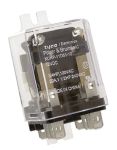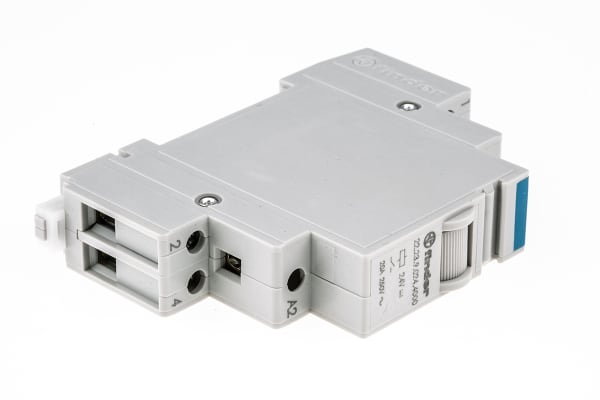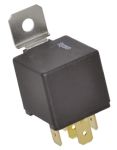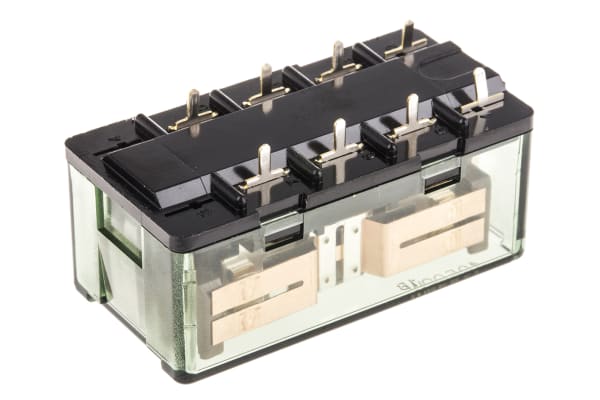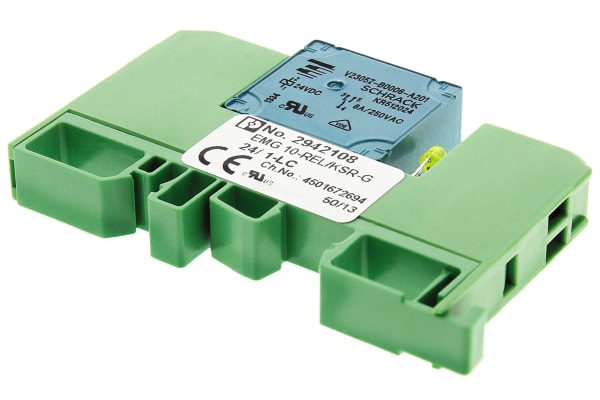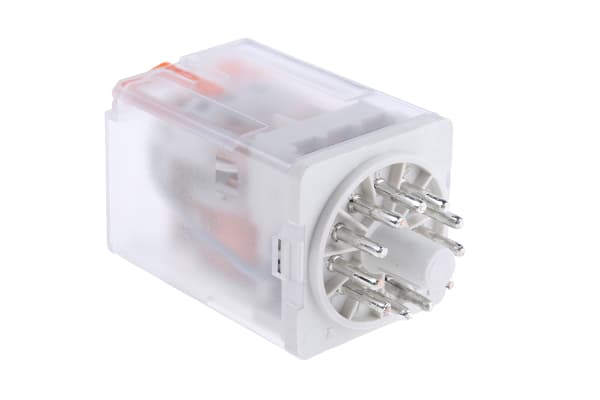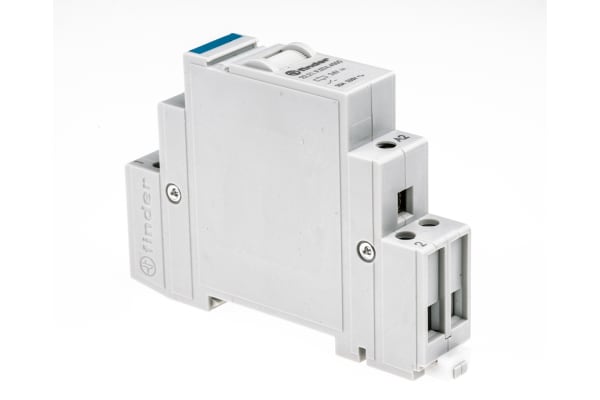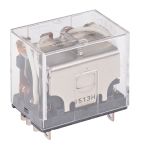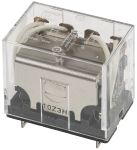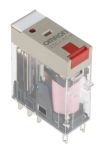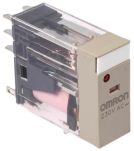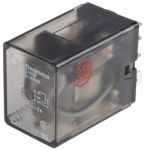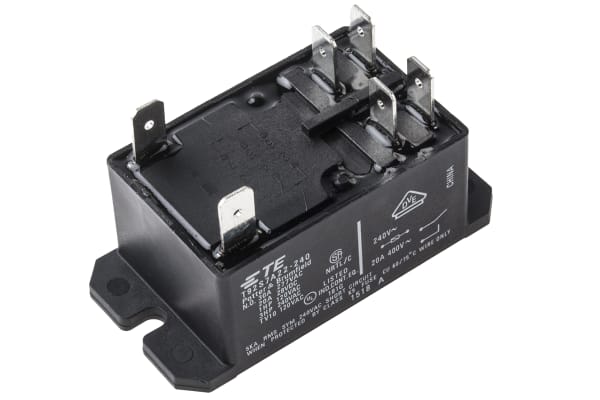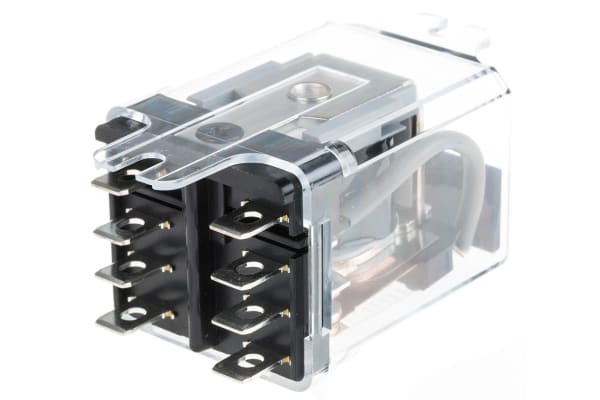Non-Latching Relays
Relays are electrical switches that are operated by electrical impulses with the primary function to open and close a circuit, they can also be referred to as industrial switches. There are 2 main types available, latching and non–latching relays.How do non-latching relays work?Non-latching relays are in a normally closed (NC) position and will stay in this state without power. When power passes through the circuit, the relay switched to a normally open (NO) position by using an internal coil to generate a magnetic force, holding this NO position. Once the current is turned off, it returns to the NC position. This makes non-latching relays well suited to push-button applications like keyboards and micro-controller input buttons.What are non-latching relays used for?Non-latching relays are highly durable and versatile components, making their performance long lasting and suitable for use in a wide range of applications, such as:Automotive enginesHousehold appliancesIndustrial machineryMedical equipmentTelecommunications equipmentWhat is the difference between latching and non-latching relays?Both types of relays in similar in design and function, however, a significant difference between them is that a latching relay will remain in the last position it when it was last powered, whereas a non-latching goes back to its normal position. This makes each more type of relay suitable for different applications. Considerations when selecting a relayWhen choosing a relay, it is important to consider a number of specifications to ensure it is fit for purpose, some factors include:Coil voltage – the required voltage to actuate the switching mechanism. If a voltage is too high this could damage the components, if it is too low then it will not actuate. Contact configuration – This is the state the contacts are in without power. For example SPST, single pole single throw.Contact material – the relay contacts are available in many materials that have certain properties. Common materials are gold, silver, tin oxide and nickel Coil power – the amount of power (watts) the coil operates at. This must match the power in the circuit for correct function. Coil resistance – the amount of resistance (ohms) in the circuit that the coil creates.
-
TE Connectivity, 12V dc Coil Non-Latching Relay DPDT, 20A Switching Current Panel Mount, 2 Pole, KUHP-11D51-12
IDR436,552.18 -
-10.00%
Finder, 24V dc Coil Non-Latching Relay SPST-NC, SPST-NO, 20A Switching Current DIN Rail, 3 Pole, 22.23.9.024.4000
IDR591,264.93IDR443,160.25 -
TE Connectivity, 12V dc Coil Automotive Relay SPDT Panel Mount Single Pole, 1432793-1
IDR444,209.15 -
Omron, 24V dc Coil Non-Latching Relay 4PDT, 10A Switching Current Plug In, 4 Pole, LY4N-DC24
IDR465,501.82 -
Panasonic DPDT Non-Latching Relay PCB Mount, 24V dc Coil, 15 A
IDR387,673.44 -
Phoenix Contact, 24V dc Coil Non-Latching Relay SPNO DIN Rail Single Pole, 2942108
IDR804,611.19 -
Relpol, 230V ac Coil Non-Latching Relay 3PDT, 10A Switching Current Plug In, 3 Pole, R15-2013-23-5230-WTL
IDR417,042.64 -
Finder, 24V dc Coil Non-Latching Relay SPNO, 20A Switching Current DIN Rail Single Pole, 22.21.9.024.4000
IDR487,109.16 -
Omron, 110V dc Coil Non-Latching Relay DPDT, 10A Switching Current Plug In, 2 Pole, LY2ND2DC100110
IDR412,951.93 -
Omron, 230V ac Coil Non-Latching Relay SPDT, 10A Switching Current Plug In Single Pole, G2R-1-SN 230AC(S)
IDR246,596.39 -
Omron, 24V ac Coil Non-Latching Relay 4PDT, 10A Switching Current Plug In, 4 Pole, LY4 24AC
IDR292,538.21 -
Omron, 12V dc Coil Non-Latching Relay 4PDT, 10A Switching Current Plug In, 4 Pole, LY4-J DC12
IDR475,781.04 -
Omron, 230V ac Coil Non-Latching Relay DPDT, 5A Switching Current Plug In, 2 Pole, G2R-2-SNI 230AC(S)
IDR480,605.98 -
TE Connectivity, 230V ac Coil Non-Latching Relay DPDT, 12A Switching Current DIN Rail, 2 Pole, PT2S7TD0 6-1415074-1
IDR462,774.68 -
Omron, 230V ac Coil Non-Latching Relay DPDT, 5A Switching Current Plug In, 2 Pole, G2R-2-SN 230AC(S)
IDR469,592.53 -
TE Connectivity, 24V Coil Non-Latching Relay DPDT, 15A Switching Current Plug In, 2 Pole, K10P-11D15-24
IDR256,456.05 -
Finder, 240V ac Coil Non-Latching Relay DPNO, 25A Switching Current DIN Rail, 2 Pole, 22.32.0.230.4320
IDR378,128.45 -
TE Connectivity, 240V ac Coil Non-Latching Relay DPNO, 30A Switching Current Flange Mount, 2 Pole, T92S7A22-240=T92
IDR489,731.41 -
TE Connectivity, 24V dc Coil Non-Latching Relay 4PDT, 6A Switching Current DIN Rail, 4 Pole, PT5S7LC4 1415076-1
IDR468,648.52 -
Finder, 240V ac Coil Non-Latching Relay DPNC, 25A Switching Current DIN Rail, 2 Pole, 22.32.0.230.4420
IDR521,093.52 -
Schneider Electric, 24V dc Coil Non-Latching Relay DPDT, 30A Switching Current Flange Mount, 2 Pole, 300XBXC1-24D
IDR452,075.90 -
Finder, 230V ac Coil Non-Latching Relay DPNO, 20A Switching Current DIN Rail, 2 Pole, 22.22.8.230.4000
IDR449,243.87 -
Finder, 12V dc Coil Non-Latching Relay DPNO, 20A Switching Current DIN Rail, 2 Pole, 22.22.9.012.4000
IDR570,811.38 -
TE Connectivity, 240V ac Coil Non-Latching Relay DPNO, 16A Switching Current PCB Mount, 2 Pole, 0419 11 0301 00
IDR535,778.12



